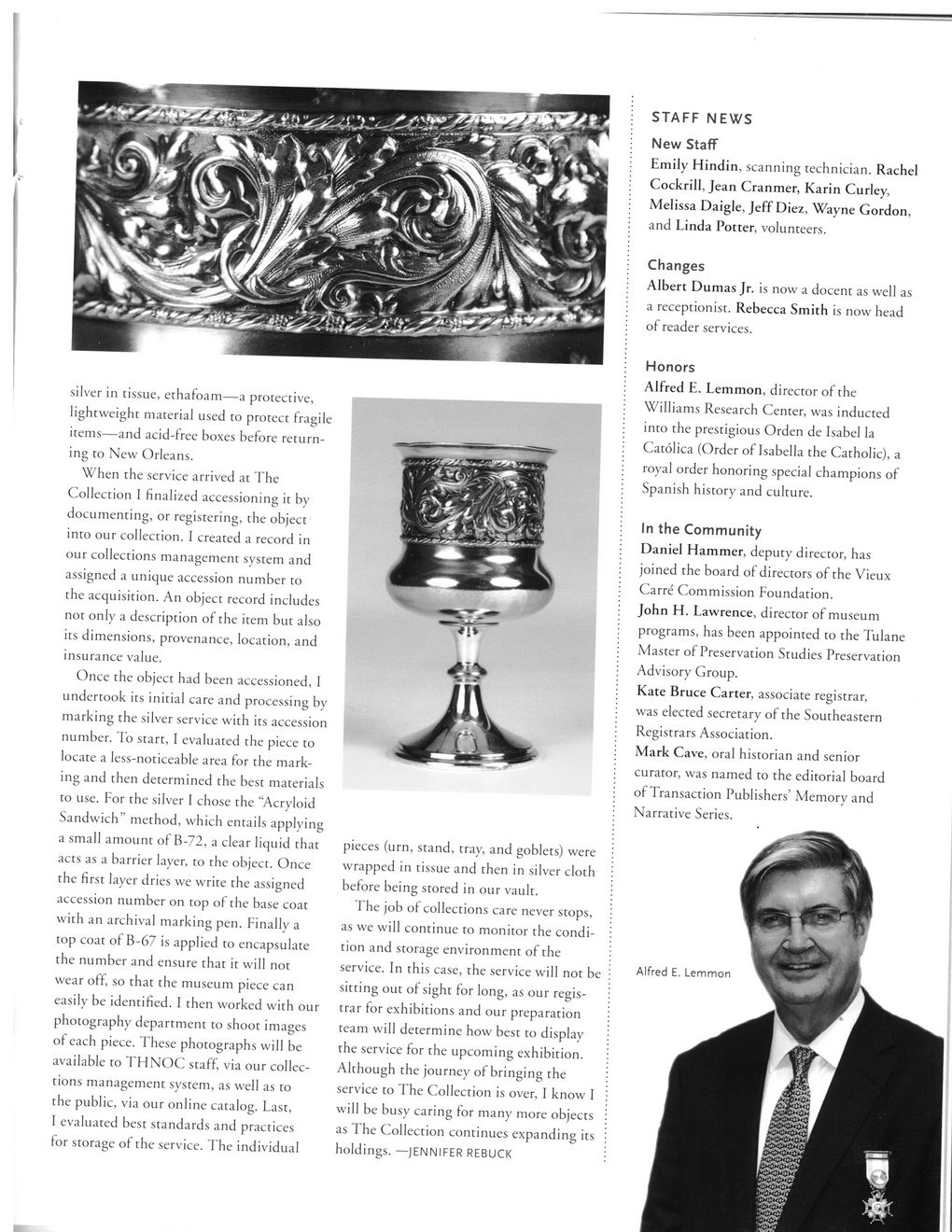This text was obtained via automated optical character recognition.
It has not been edited and may therefore contain several errors.
silver in tissue, ethafoam—a protective, lightweight material used to protect fragile items—and acid-free boxes before returning to New Orleans. When the service arrived at The Collection I finalized accessioning it by documenting, or registering, the object into our collection. I created a record in our collections management system and assigned a unique accession number to the acquisition. An object record includes not only a description of the item but also its dimensions, provenance, location, and insurance value. Once the object had been accessioned, I undertook its initial care and processing by marking the silver service with its accession number. To start, I evaluated the piece to locate a less-noticeable area for the marking and then determined the best materials to use. For the silver I chose the “Acryloid Sandwich” method, which entails applying a small amount of B-72, a clear liquid that acts as a barrier layer, to the object. Once the first layer dries we write the assigned accession number on top of the base coat with an archival marking pen. Finally a top coat of B-67 is applied to encapsulate the number and ensure that it will not wear off, so that the museum piece can easily be identified. I then worked with our photography department to shoot images of each piece. These photographs will be available to THNOC staff, via our collections management system, as well as to the public, via our online catalog. Last, I evaluated best standards and practices for storage of the service. The individual pieces (urn, stand, tray, and goblets) were wrapped in tissue and then in silver cloth before being stored in our vault. The job of collections care never stops, as we will continue to monitor the condition and storage environment of the service. In this case, the service will not be sitting out of sight for long, as our registrar for exhibitions and our preparation team will determine how best to display the service for the upcoming exhibition. Although the journey of bringing the service to The Collection is over, I know I will be busy caring for many more objects as The Collection continues expanding its holdings. —JENNIFER REBUCK STAFF NEWS New Staff Emily Hindin, scanning technician. Rachel Cockrill, Jean Cranmer, Karin Curley, Melissa Daigle, Jeff Diez, Wayne Gordon, and Linda Potter, volunteers. Changes Albert Dumas Jr. is now a docent as well as a receptionist. Rebecca Smith is now head of reader services. Honors Alfred E. Lemmon, director of the Williams Research Center, was inducted into the prestigious Orden de Isabel la Catolica (Order of Isabella the Catholic), a royal order honoring special champions of Spanish history and culture. In the Community Daniel Hammer, deputy director, has joined the board of directors of the Vieux Carre Commission Foundation. John H. Lawrence, director of museum programs, has been appointed to the Tulane Master of Preservation Studies Preservation Advisory Group. Kate Bruce Carter, associate registrar, was elected secretary of the Southeastern Registrars Association. Mark Cave, oral historian and senior curator, was named to the editorial board of Transaction Publishers’ Memory and Narrative Series.

New Orleans Quarterly 2015 Winter (17)